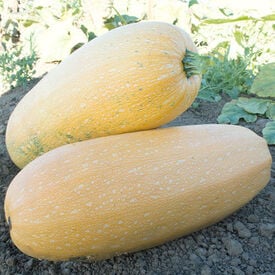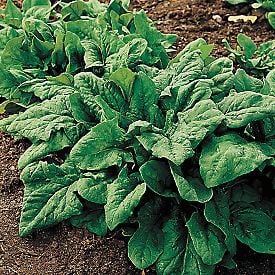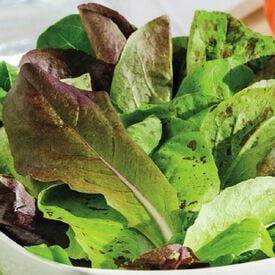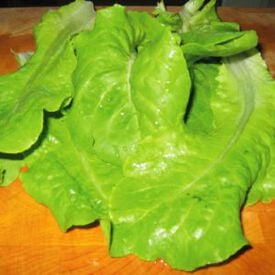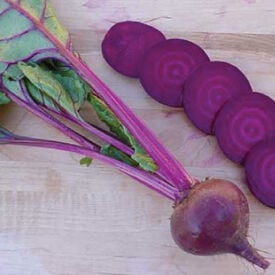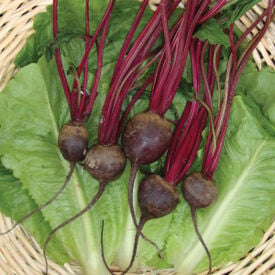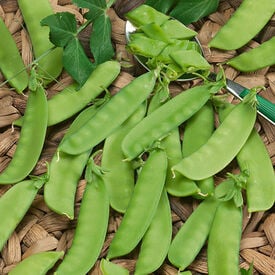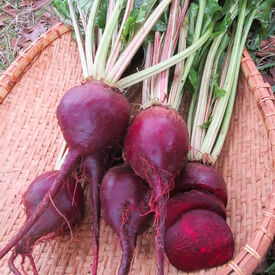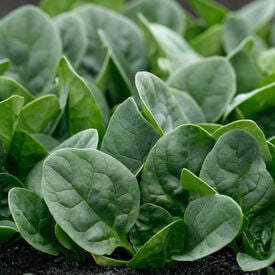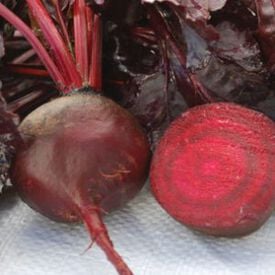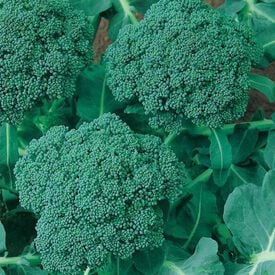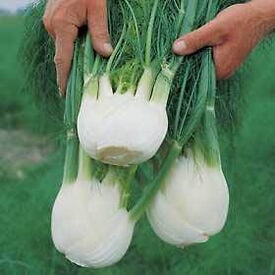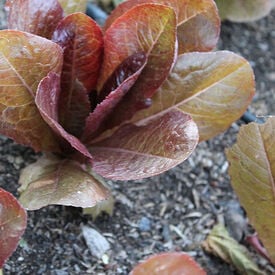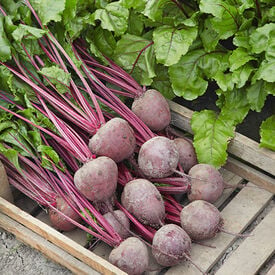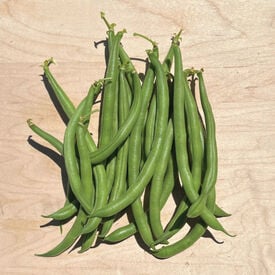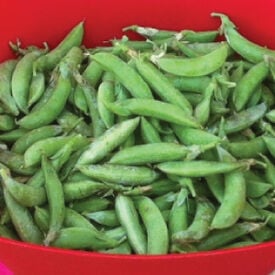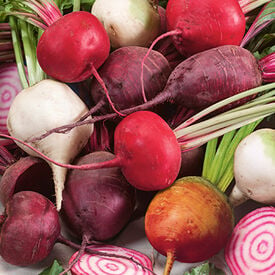Often called Early Coreless, this heirloom carrot is prized for its excellent storage ability and wide adaptability in the garden. It produces smooth, cylindrical roots about 7 inches long with rounded ends and vibrant red-orange flesh that is fine-textured and nearly free of a core. The flavor is notably sweet, crisp, and clean, making it enjoyable fresh or cooked. Harvested young, it works beautifully as a baby carrot, and it also performs exceptionally well for freezing and juicing. With origins dating back to the 1850s, this classic variety was developed in France by the renowned seed firm Vilmorin-Andrieux and remains a favorite for its quality and reliability.
The Goldetti F1 Squash is a cylindrical golden orange winter squash variety with a dry stringy flesh resembling long, thin pasta. These 11 inch long squashes are ready to harvest when the skin becomes hardened and will keep for up to six months. The Goldetti is a wonderful pasta substitute and is best prepared whole in the microwave or baked.
The super sweet Renegade Spinach is simply the best all-around Spinach! This very adaptable spinach variety is early maturing with heavy yields and is easy to grow. Its dark green, rounded leaves are resistant to mildew and arise profusely on compact plants. Renegade is perfect for beginning gardeners and those that have been let down by other varieties!
The Romaine Trio Blend is a mixture of three of our specialty romaine lettuces. This tri-colored blend is very popular for not only its beautiful color variation and vigorous growth, but also for its delicious taste.
Buttercrunch lettuce seeds produce a popular variety known for its crisp, tender leaves and sweet, buttery flavor. This heirloom variety features thick, light green leaves that form a loose, rosette shape, making it visually appealing in the garden and on the plate. Buttercrunch lettuce is known for its ability to tolerate heat better than many other lettuces, which allows for extended growing seasons. The leaves are slightly wavy and have a delicate texture, making them perfect for salads, sandwiches, and wraps. They also hold up well in dressings, adding a delightful crunch. When grown from seed, Buttercrunch lettuce typically germinates quickly, with seedlings developing into lush heads in a relatively short time. It thrives in cooler weather, making it an excellent choice for spring and fall gardens. Overall, Buttercrunch lettuce seeds offer a reliable and delicious option for home gardeners seeking to enjoy fresh, homegrown greens!
The Ruby Queen is an excellent canning and fresh eating beet! A perfectly round beet that has a smooth buttery texture that is more tender than any other beet. An early maturing beet, 52 days, that grows well in any soil type throughout the country. Ruby Queen can be grown close because they hold their shape well. They can also be grown larger than most beets and still hold good flavor making it a great market beet. An All American Selection winner!
The Detroit Dark Red is the standard all-purpose heirloom beet! This is by far the most popular beet for home gardens. Detroit Dark Red has blood red flesh that is very sweet and tasty. Beets are perfectly round with no rings or streaks. Has 13-16" greens that are wonderful mixed into salads. Very prolific and good keeper. This heirloom was first introduced in 1892 by Mr. Reeves of Ontario, Canada.
The Mammoth Melting Pea is a snow pea that adds the perfect mouthwatering crunch to any salad! The 5-6 foot tall vines require trellising for support. This variety's large sweet pods thrive in the cooler weather. Add a fresh pop of bright green to any garden or dish with the Mammoth Melting! Certified Organic. Learn more about our organic seeds.
The Lutz Green Leaf White Stem Beet is an attractive deep red variety with white stalks that is absolutely delicious when steamed or roasted. This beet is known for having huge glossy, deep green tops that are perfect for salads! This beet is a "winterkeeper" beet that has a long standing storage capability. The Lutz Green Leaf White Stem has 6 inches in diameter roots.
Countryside is a beautiful dark green very uniform baby leaf spinach variety. It has thick smooth round oval leaves. Countryside has good holding ability for baby leaf and it has acceptable bolt tolerance for fresh market growers. Due to its moderate growth habit, it has performed well in many West Coast baby leaf growing slots.
Bull's Blood beet, scientifically known as Beta vulgaris, is a striking and versatile variety of beetroot that has gained popularity for its unique characteristics. This heirloom variety has a fascinating history, dating back centuries to Europe, where it was initially cultivated for its edible leaves rather than the root. Its name, "Bull's Blood," is derived from the deep burgundy-red color of its leaves, which resemble the color of ox blood. Over time, its sweet and earthy flavor profile has made it a favorite among chefs and home gardeners alike. In terms of appearance, Bull's Blood beets typically grow to a medium size, roughly 2-3 inches in diameter, and have a round to slightly flattened shape. The seeds of this variety are easy to come by and can be sown directly in the garden or started indoors. Bull's Blood beets are relatively quick to mature, taking about 50-60 days from seed to harvest. The leaves are a deep red, while the root itself is a dark purplish-red, making it visually appealing on the plate. Bull's Blood beets exhibit some resistance to common beet diseases like Cercospora leaf spot and Downy Mildew, although specific resistance levels may vary depending on growing conditions. When properly cared for, they can yield a plentiful harvest. To ensure optimal growth, it's recommended to space the beet plants about 2-4 inches apart in well-drained soil with full sun exposure. Adequate moisture and consistent watering are essential for healthy growth. Whether you're looking to add a pop of color to your garden or enhance your culinary creations, Bull's Blood beets are a delightful choice with a rich history and vibrant character.
The Green Sprouting Calabrese produces large dark green heads bursting with flavor. This broccoli with is a favorite, that now is available as organic seed! Good in short season areas with cool nights. It will produce many lateral or side shoots over a long season. It is slow bolting with a flavor that can't be beat.
Florences's fresh fennel leaves are a favorite on salads, with eggs, fish and sauces! This fennel has a bulbous stem that can be steamed, grilled or served raw, like celery. When cut, this fennel has a delicate anise aroma. Florence thrives in full sun and mild to cool weather.
The Merveille Four Seasons is a French Bibb lettuce type that produces rich deep reddish leaves with bright cranberry red tips. This 12-16 inches lettuce has a wonderful butter taste and will hold its flavor in hot weather. The rich red leaves surround a small, 8-12 inches pale green, tight heart. Enjoy the Merveille Four Seasons chopped up in a salad for fresh flavor and a pop of beautiful color.
The Lutz Green Leaf Red Stem Beet has a beautiful deep red hue and a mouth watering taste that pairs perfectly with any dish. This variety is known for having huge glossy, deep green tops that are amazingly delicious! This beet is a "winterkeeper" beet that has a long standing storage capability. The Lutz Green Leaf Red Stem has 6 inches in diameter roots.
Jade bush beans are long, uniform pods that reach 6-7" in length. With slender, deep green pods that burst with delicious flavor. A high yielding bean that doesn't mind stress and offers good disease resistance. Pale green seeds.
Sugar Ann is a 1984 All America Selections winner! This snap pea variety has an edible pod that offers earliness, productivity, and a compact growth habit. The crisp, sweet succulent 3 inch pods are ready to eat in just 10 to 14 days ahead of the original Sugar Snap, and remain in prime eating condition for days.
The Rainbow Blend contains a kaleidoscope of orange, purple, red, white and multi-colored beet varieties that will make any dish pop! This colorful variety not only produces the brightest colored beets, but also the tastiest. This blend is a great addition to any garden, especially a container garden. Enjoy this beet blend in a salad, or roasted for a mouthwatering colorful plate.

